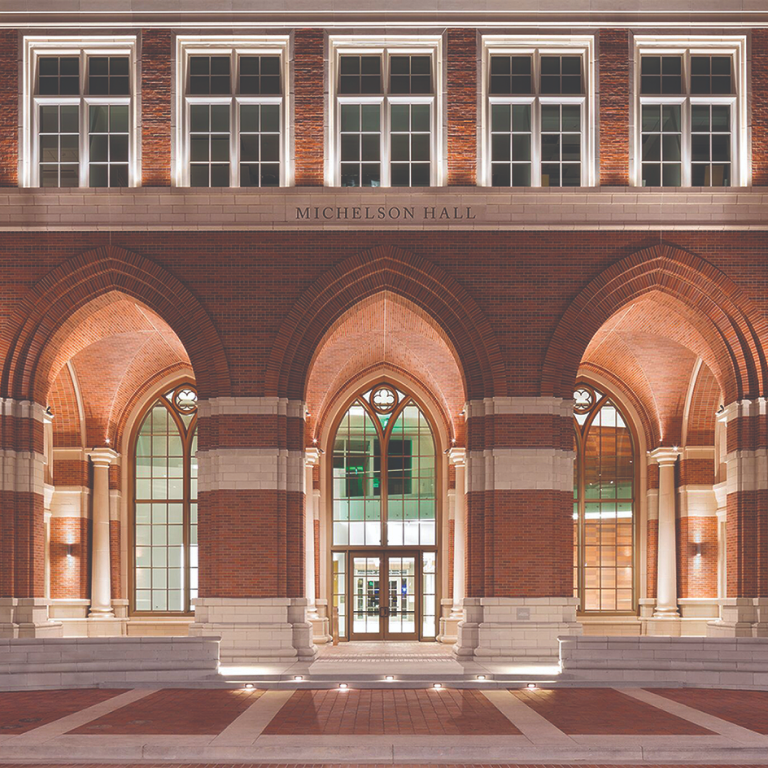
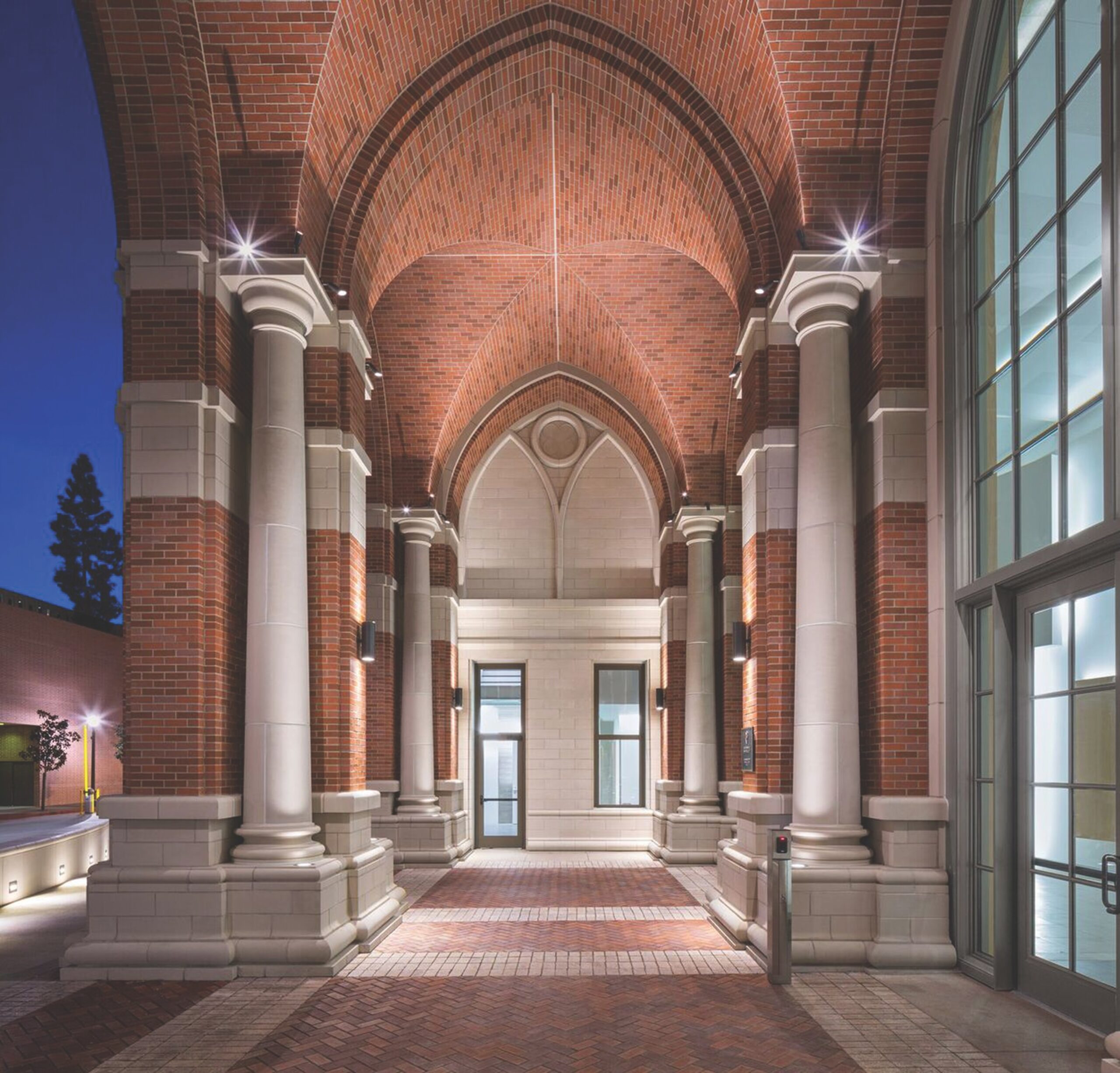
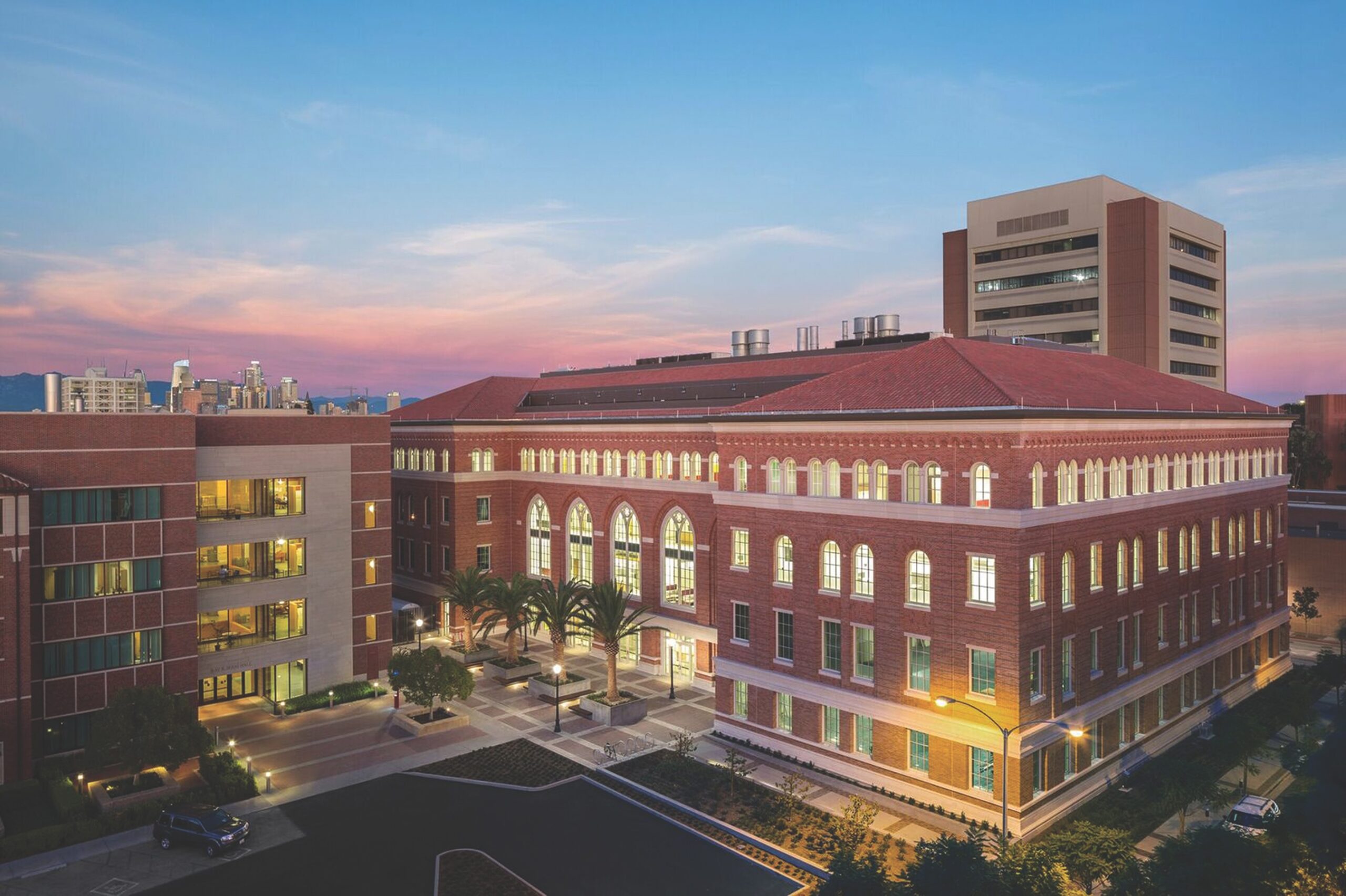
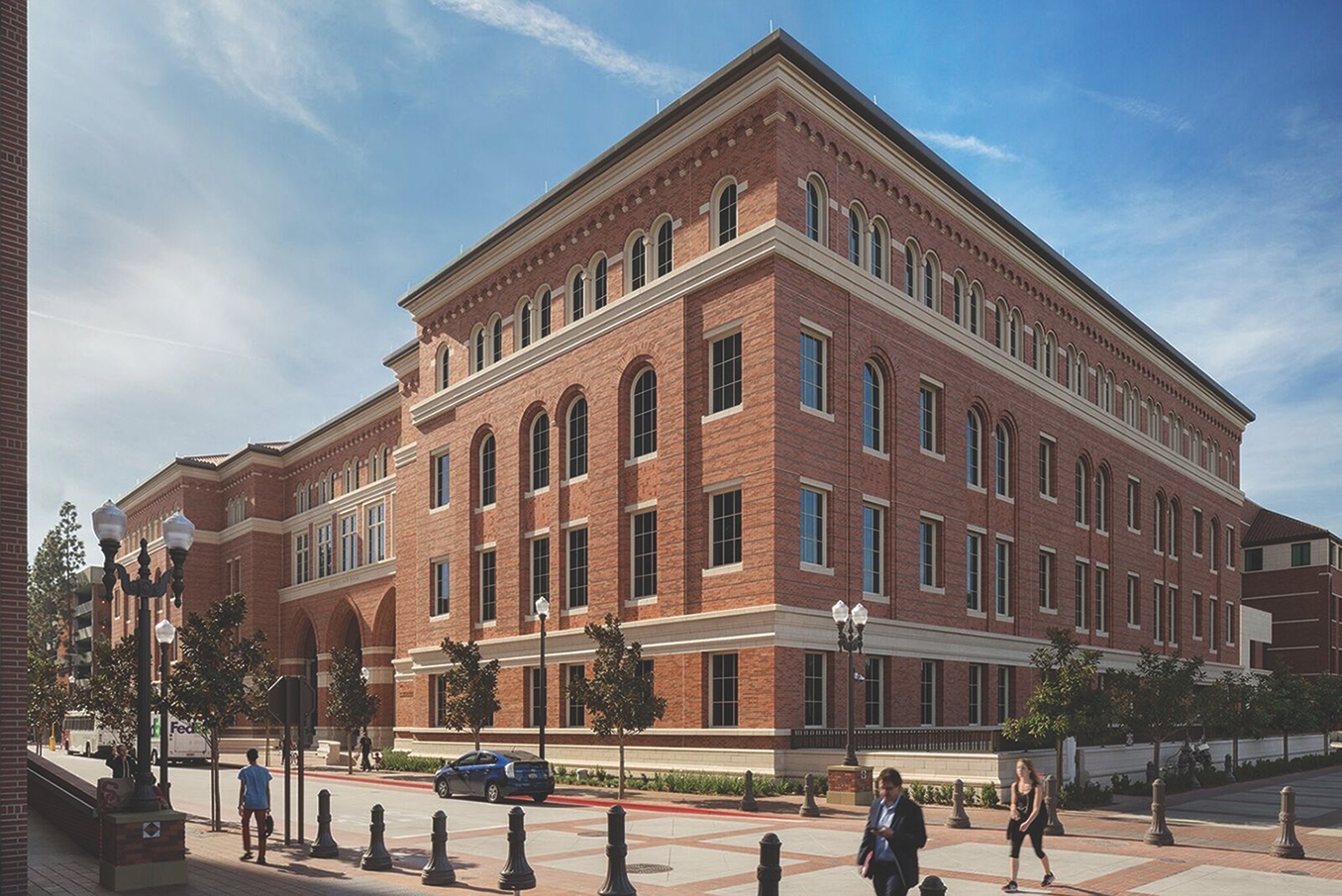
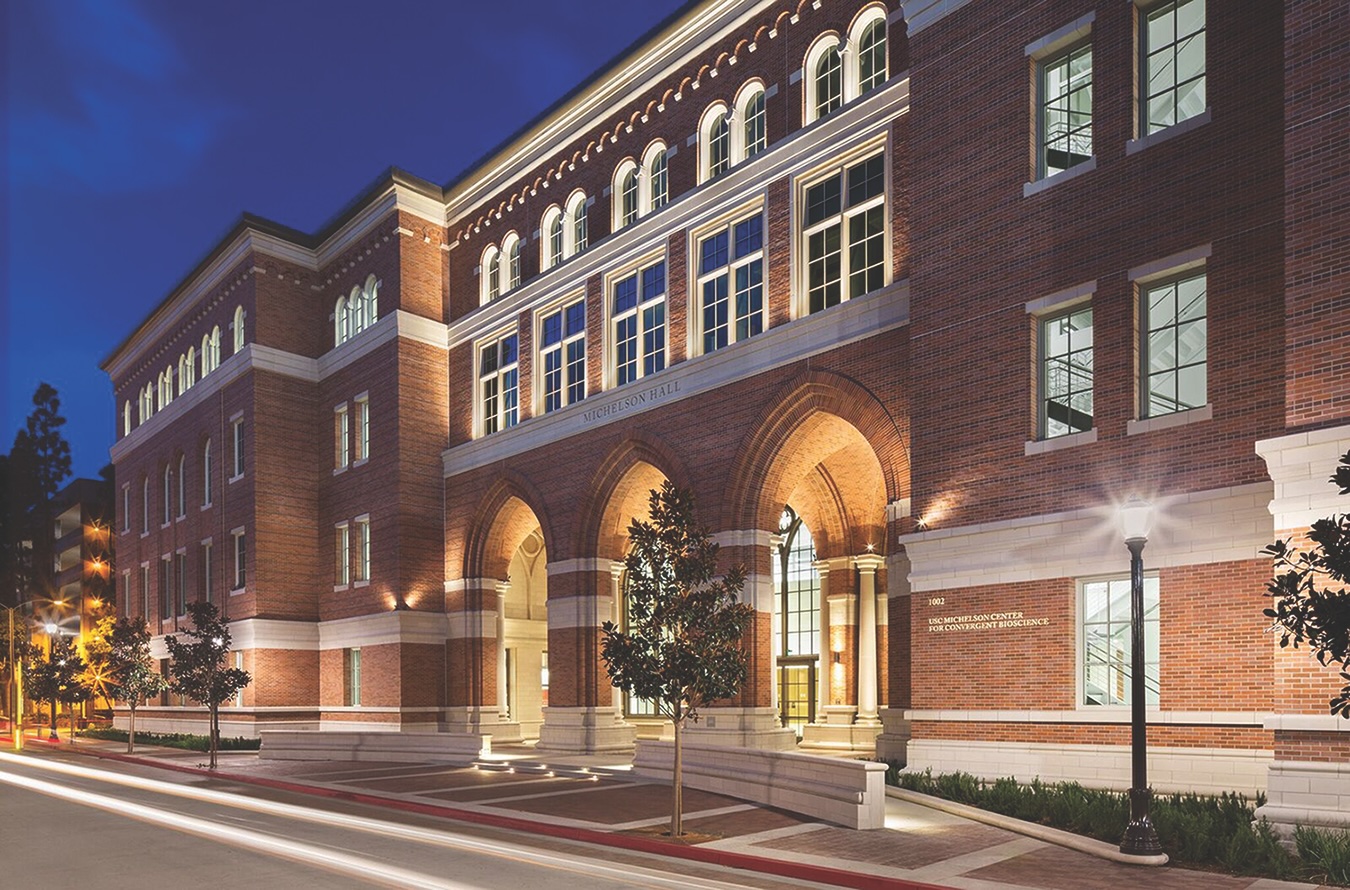
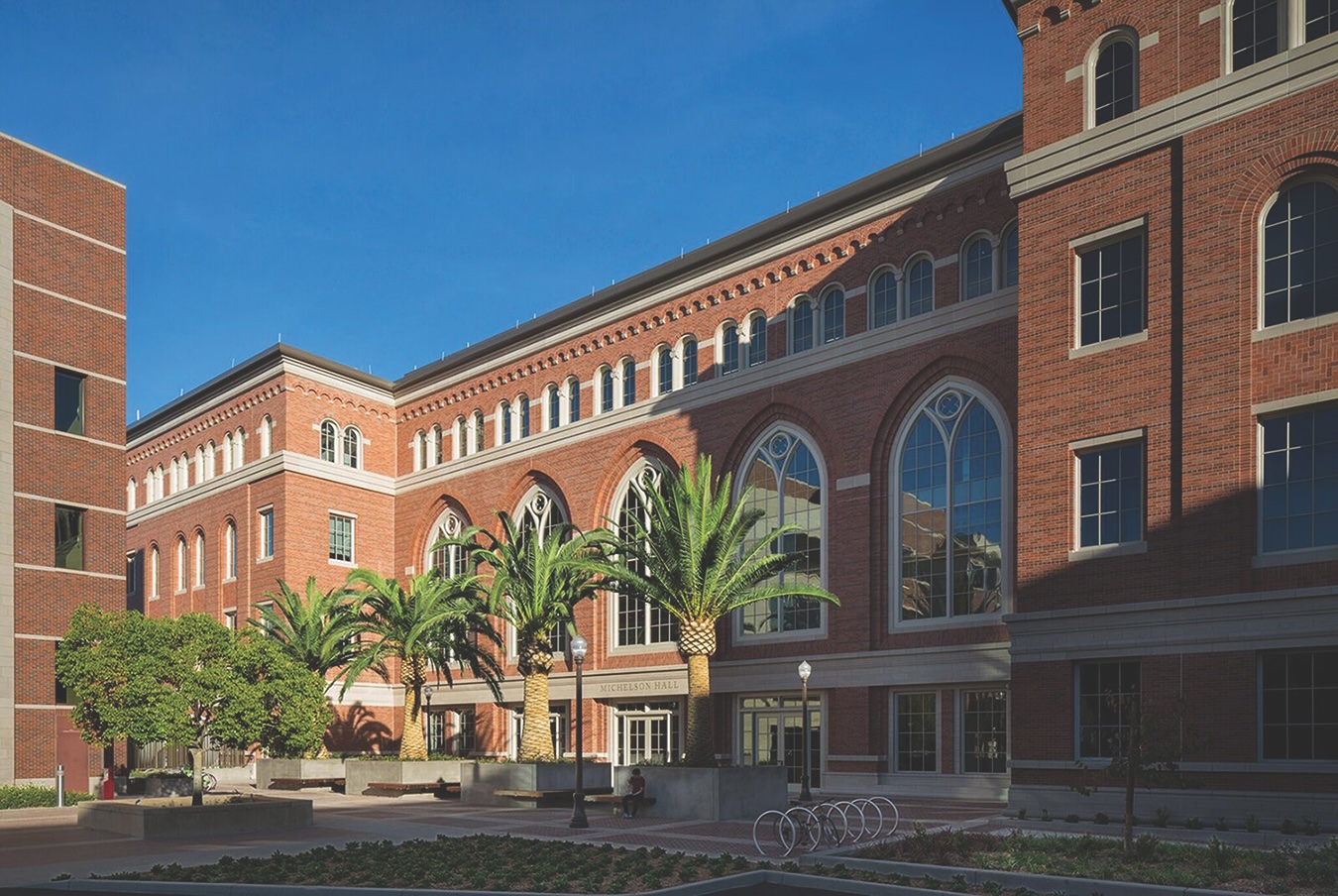
IT’S ALL IN THE DETAILS
Founded in 1880, the University of Southern California (USC) in the University Park neighborhood of Los Angeles, is one of the oldest private research universities in the state. And its architectural evolution is just as exciting as the discoveries being made inside its hallowed halls.
The Michelson Center for Convergent Bioscience — near the heart of the USC’s science and engineering hub and the largest academic building on campus — epitomizes masonry’s architectural brilliance through adaptability and historic grandeur. With construction officially beginning in 2014 and completed in 2017, Michelson Center stands as a proud symbol of the university’s rich legacy.
| Owner: University of Southern California, Los Angeles, CA | Masonry contractor: Masonry Concepts, Inc., Santa Fe Springs, CA |
| Architect: Hellmuth, Obata + Kassabaum, Inc., Culver City, CA | Masonry materials: Pacific clay brick / Velour modular USC blend, Moonlight molds / Architectural cast stone & GFRC |
| General contractor: DPR Construction, Newport Beach, CA | Masonry square footage: 44k sq. ft. of brick; 16k sq. ft. of cast stone |
| Engineering firm: John A. Martin & Associates, Inc., Los Angeles, CA | Masonry cost: $7,400,000
Stories: 4 |
Rising over four stories, the Michelson Center stands as a beacon of USC’s dedication to tradition, innovation and excellence. The building’s facade showcases a well-crafted blend of hand-set cast stone nestled within a four-inch face brick veneer, a testament to tradition in both significance and performance.
The flexibility of masonry construction was a key factor in choosing brick for the Michelson Center.
To reflect the university’s legacy, the Michelson Center was constructed in the Gothic Romanesque style, mirroring USC’s architectural evolution from Victorian and Romanesque to the current mix of Romanesque Revival and contemporary styles. And it could only be accomplished through masonry.
Additionally, the building’s trademark design comes from the innovative use of the Hohmann and Barnard concealed lintel system — underscoring masonry’s enduring appeal as a premier building finish — which provides structural support over window and door openings. By including steel lintels concealed within the walls, builders were able to maintain the Michelson Center’s aesthetic integrity while ensuring the structural support of the masonry above the openings.
USC continues to evolve, with ongoing construction and renovation projects that blend historic preservation with cutting-edge facilities for education and research.